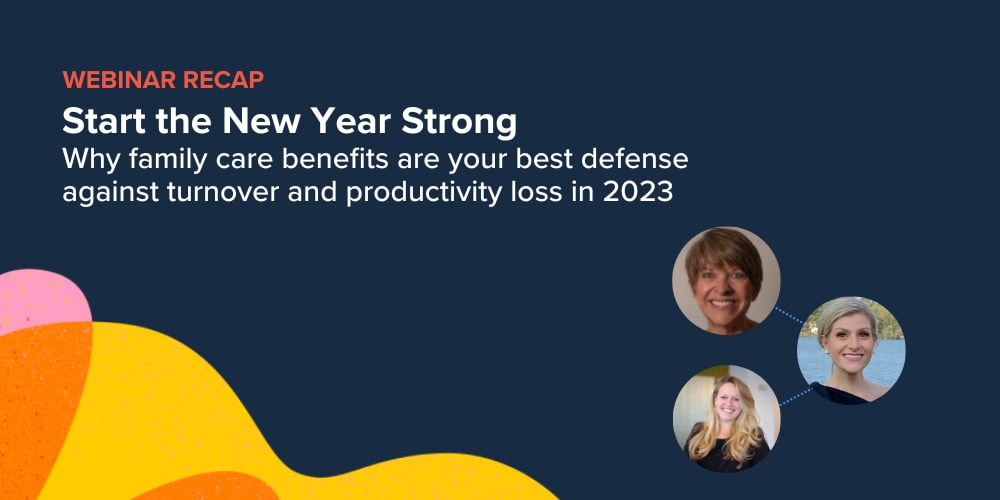Covid-19 forced an unexpected, yet necessary inflection point upon both employers and employees. Business and HR leaders had to react quickly to a public health crisis. It was the biggest physical and psychological workplace adjustment we’ve ever experienced – on a massive scale and at a dizzying pace.
As jarring as 2020’s shift to remote work was, 2021’s return-to-work transition is shaping up to be even more disruptive.
One message is clear. In survey after survey after survey, employees agree that they don’t want to return to the “before times” workplace. They’re anxious about giving up their flexibility, concerned about contracting Covid-19, and dread going back to those workday commutes.
All this worry makes sense. Over the last 15 months, we’ve had more control over when and where work gets done, and – most importantly – how we care for ourselves and those around us. We got accustomed to fitting work around life, not the other way around. To our morning workouts. To spending more time with our kids. To walking the dog at lunch time. To taking mom to her afternoon doctor’s appointment. To squeezing in a much-needed 15-minute meditation session in between Zoom meetings.
We don’t want to lose what we quietly admit are the things we enjoyed about pandemic work/life: the freedom and flexibility that has made our lives better than before. And many of us are happier and more productive because of it.
Care is a small word with big meaning. The pandemic expanded our definition of care as a universal need that takes many forms, all of them affecting both employees and employers. Care is more than finding a babysitter to watch the kids or helping with mom or dad. It’s a timesaver. A stress reliever. It helps us with managing everyday commitments and life’s unexpected moments. Care lets us be our authentic selves and helps us get stuff done at home and at work.
Here’s how companies are responding to the need for care.
Care for working parents and their children
Before the pandemic, child care was somewhat routine for most working parents. Like clockwork, you’d drop off the kids at daycare, Monday through Friday, from 8-6. But with more flexibility in how, when, and where we work, employees’ child care needs are less linear and more unpredictable. There’s no one-size-fits-all solution when it comes to care. Gone are the days of inflexible corporate daycare centers.
Due to a lack of child care during the pandemic, working parents lost eight hours per week on average individually, and nearly 15 hours per week combined with a spouse or partner. Now, parents simply won’t tolerate working for a company that doesn’t provide child care benefits – whether it’s a large enterprise or a small or medium-sized business.
Care.com’s Future of Benefits report found that 61% of HR leaders are deprioritizing on-site day care facilities in lieu of more flexible child care benefits. These can include in-home care, nanny shares, child care subsidies and stipends, backup care, even help with summer school programs and on-demand tutoring (which parents love after a year of watching their kids struggle with pandemic learning loss).
Care for aging parents and elderly loved ones
America is getting older, and that means our aging population will need more care. Much of that burden falls on family members. As of 2020, there were more than 41 million Americans caring for a family member or friend aged 50 or older, a number that swelled by more than 8 million since 2015. And, nearly half of all middle-aged Americans are “sandwiched” between raising children and caring for aging or ailing parents, putting tremendous strain on their mental, physical, and financial health, and on their relationships.
The pandemic has forced many families to reconsider placing their elderly family members in nursing homes, opting instead for more flexible options like in-home care so they can age in place. Care.com research found that, despite the isolation and depression brought on by the pandemic, 62% still prefer to age within their homes.
But arranging and paying for senior care can be a complicated and time-consuming endeavor – and it’s increasingly difficult for employees who are also taking care of themselves, their kids, and working a full-time job. That’s why 41% of HR leaders plan to expand their senior care offerings this year, including access to senior care advisors who are Masters‐level social workers and work one‐on‐one with employees and their families to provide personalized guidance, resources, and care plans. Employer-provided advisors find, match, and vet senior care providers including assisted living facilities and nursing homes. They also offer local referrals and education, design plans on how to pay for care, help relocate an aging family member, and provide assistance to help seniors age in place safely at home.
Care for mental health and wellness
The pandemic has done a number on our mental health and wellbeing. More than half of workers are experiencing burnout this year, and more than two-thirds say burnout got worse during the pandemic, according to a March 2021 survey by Indeed.
The pandemic has also ushered in a new era of compassion and understanding for the mental health issues that employees have long been suffering from in silence. HR leaders are helping employees take better care of themselves whenever and wherever it works best for them – including sleep health apps, fitness and nutrition programs, virtual talk therapy, and counselors who can help employees cope with anxiety and stress.
Taking time away from work to decompress and recharge is another way employers are offering support. The New York Times, Cisco, and SAP are all giving their employees mental health days this year. Some are taking it a step further. PwC is giving employees $250 if they take a week’s vacation in the next year. And in April, LinkedIn gave its entire workforce a collective paid week off.
Wellness apps and extra vacation days won’t solve mental health issues, but they’re an encouraging sign that employers are starting to recognize and de-stigmatize the problem. “I think it’s important to note that this is not an issue that will be solved with a single initiative,” notes Dan Healey, head of HR at SAP. “To prioritize mental health means to support employees for the long term and continue to adopt benefits and initiatives that reflect their needs.”
Care for life’s moments – big and small
One of the advantages of lockdown work/life was the ability to get “life stuff” done in between meetings, emails, and calls – not squeeze it in at the end of a busy workday or on the weekends like we used to. More time at home has afforded many of us more time to tackle all the big and little things that feel like a second, unpaid job (that disproportionately falls on women): household chores, scheduling doctor’s appointments, planning birthday parties, food planning. The list goes on and on, and it never ends.
Many companies are offering employees personalized options to help them take care of everything from everyday tasks to life’s biggest challenges, saving them time, stress, and money and boosting their productivity at work. Whether it’s through online platforms like Care.com or via highly trained personal care specialists, these solutions can be a lifesaver for employees who need help finding care for their family, their pets, and their home. They can also provide support in tackling life’s more complex issues, like relocating, natural disaster relief, food insecurity, and much more.
Care for pets
Millions of pets found forever homes during the pandemic. And every pet parent, whether they’re a rookie or a veteran, formed close bonds with their four-legged family members last year. But the prospect of returning to the office has pet parents anxious about how being gone all day will affect the physical and mental wellbeing of their furry companions. Sixty-nine percent of pet parents are stressed about what returning to work will mean for their pets, and 56% are worried about leaving their pet home all day without any supervision or exercise, according to a recent Petco survey.
To give pet parents peace of mind, companies are doing everything from welcoming pets back into the office to allowing more flexibility for employees to work remotely so they can be with their pets. Other popular, pet-friendly perks include offering workers pet insurance and giving them premium access to online platforms to find a dog walker or a cat sitter.
Care isn’t just an employee need – it’s a business imperative
As the worst days of the pandemic fade away, people are taking stock of their lives, reevaluating their careers, and considering a fresh start built around who and what matters most to them. That may be why 41% of employees are considering leaving their current employer this year, and why 46% are likely to move because remote work is now an option, according to findings from Microsoft’s 2021 Work Trend Index.
The one certainty employers have as they head into the post-pandemic future of work is that they’ll need to build a personalized care infrastructure for employees that provides both greater flexibility and the expanded definition of care. Businesses that embrace this approach are the ones who will attract and keep the best people. They’re also the ones who will see a happier and healthier workforce, increased productivity, greater employee loyalty and retention, and growth.
********
Find out how you can support your employees with care benefits. Get in touch to learn more.






